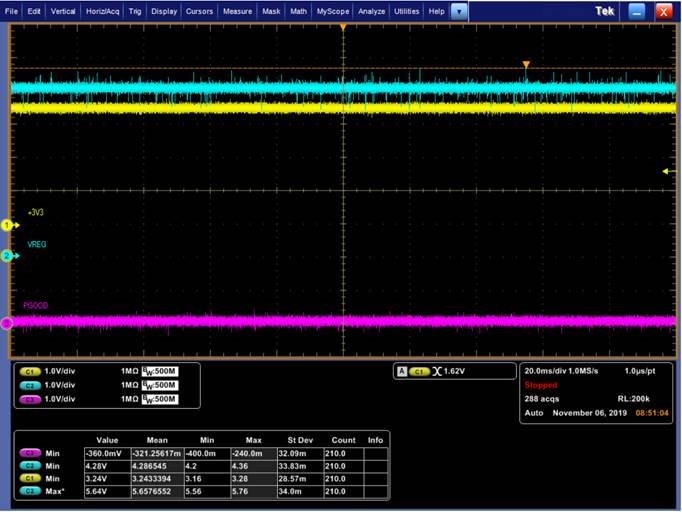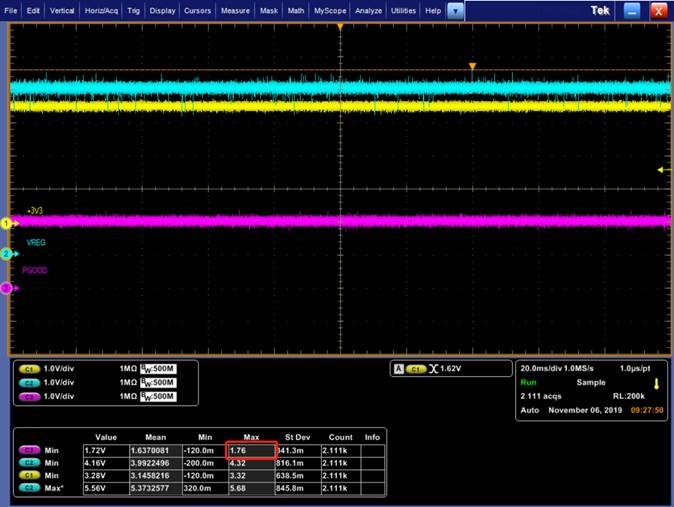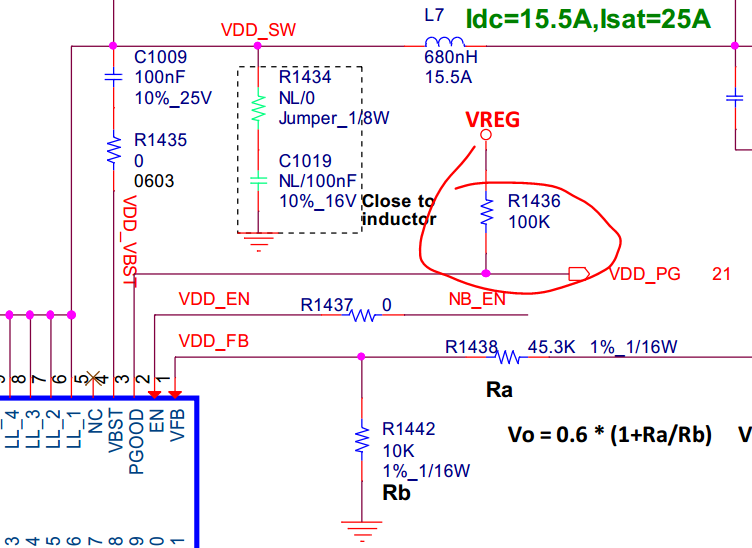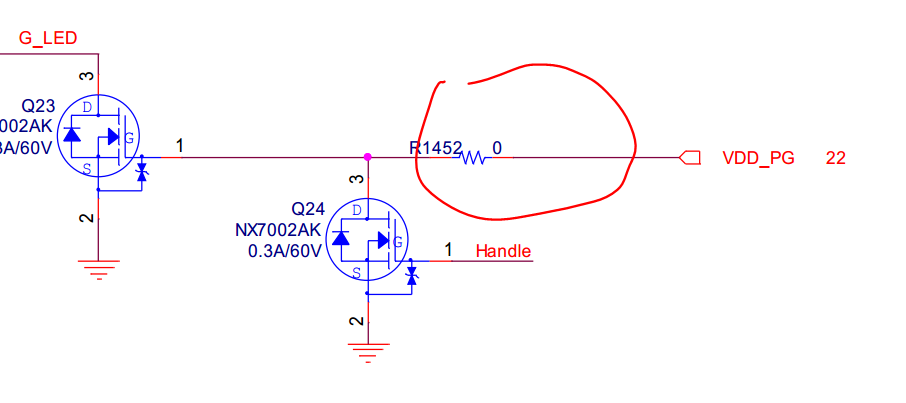Hi team,
Our customer meet some problem with TPS53353 PGOOD pin. Please refer to the detail information below.
1. Our customer do the test with 4 pcs tps53353, only 1 pcs works good, other 3 pcs all meet the issue
2. PGOOD pin is pull up to VREG through 100kohm resistor, VREG is 5V when the output of TPS53353 reaches 3.3V, but PGOOD pin is not high when Vout=3.3V
2. We change the 100kohm pull up resistor to 100ohm, PGOOD pin is 1.6V now.
3. We remove the pull up resistor R1436, and also the 0ohm R1453 connected to LED string, to make PGOOD pin floating, and we test the impedance to ground of PGOOD pin, it's about 800k when the device is not power on, and it decrease to 40ohm after power on.
We also do the test with the good one, the impedance is about 800k after power on, so the PGOOD pin can be pulled high.
Could you please give some comments on what may be the issue cause?
Thanks.
Best Regards,
Livia Liu





